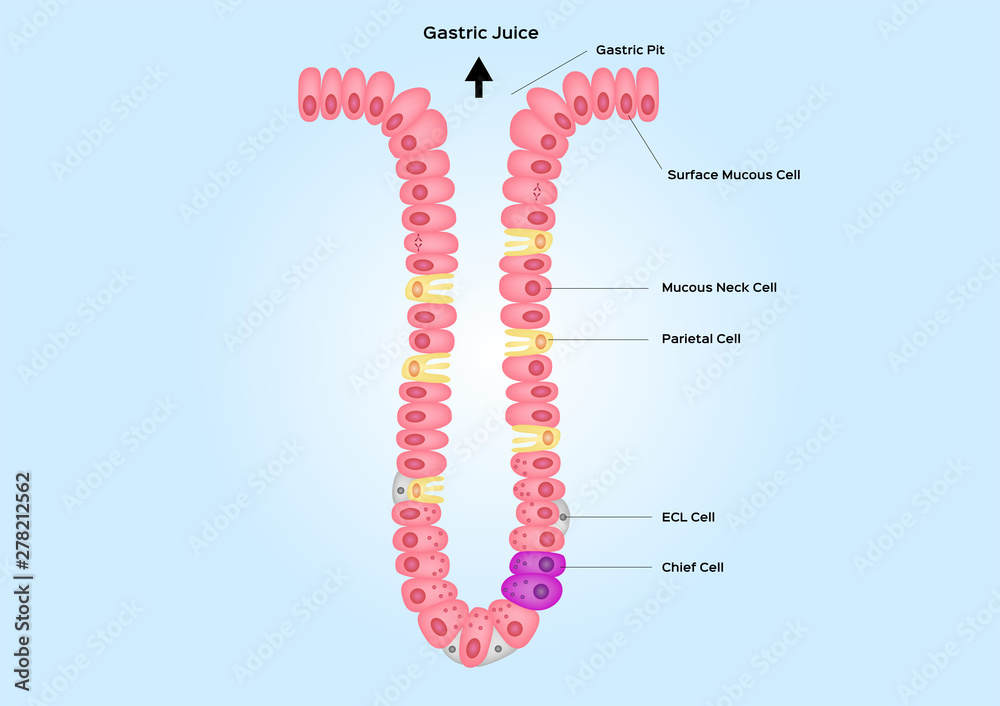Gastric pits and gland vector anatomy organ Biology Diagrams
Gastric pits and gland vector anatomy organ Biology Diagrams In the inner surface layer (epithelium) of the stomach, gastric glands produce mucus to protect the stomach lining, hydrochloric acid for digestion and digestive enzymes such as pepsinogen Gastric gland and gastric wall: histology diagram. Gastric glands open into the base of gastric pits. They are found throughout the entire inner surface of the stomach and are divided into 3 types depending on the region in which they are found. Gastric glands proper (principal glands) are found in the fundus/body of the stomach. The cells of

Sometimes, gastric juice eats away at the superficial lining of the stomach mucosa, creating erosions, which mostly heal on their own. Deeper and larger erosions are called ulcers. gastric gland gland in the stomach mucosal epithelium that produces gastric juice gastric phase phase of gastric secretion that begins when food enters the stomach Gastric juice is secreted by gastric mucosal glands, and contains hydrochloric acid, mucus, and proteolytic enzymes pepsin (which breaks down proteins), and lipase (which breaks down fats). When the stomach is empty, and not distended, the lining is thrown up into folds called rugae. After eating, these folds flatten, and the stomach is able to gastric gland, any of the branched tubules in the inner lining of the stomach that secrete gastric juice and protective mucus.. There are three types of gastric glands, distinguished from one another by location and type of secretion. The cardiac gastric glands are located at the very beginning of the stomach; the intermediate, or true, gastric glands in the central stomach areas; and the

Stomach Anatomy: Complete Guide with Parts, Names & Diagram Biology Diagrams
However, in people with gastric cancer, some of the glands from the normal, non-cancerous stomach lining showed changes under the microscope that resembled the early stages of transitioning to cancer. The stomach lining consists of distinct regions with specialized functions, including the antral and oxyntic mucosa. These areas differ in structure, cellular composition, and physiological roles, contributing to digestion and maintaining gastric health. Gastrin-producing G cells reside in the deeper portions of the gastric glands and The gastric glands are tiny, tube-like structures found in the inner lining of the stomach. These glands are essential for digestion, as they produce various substances needed to break down food. They start at small openings in the stomach lining called gastric pits, which are part of the stomach's mucous layer. The gastric pits contain cells
